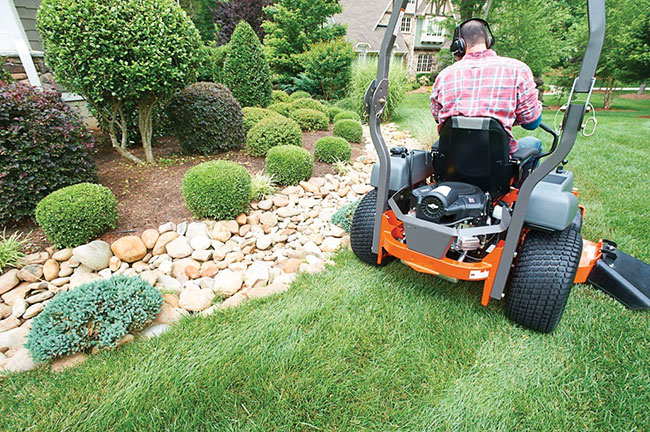
Features
Health & Safety
Landscaping
Put safety first in spring readiness as outdoor power equipment is rolled out for season
Safe operations among employees cannot be neglected
March 23, 2023 By By the Outdoor Power Equipment Institute
 Think safety first when preparing equipment for spring, suggests the OPEI.
Photo: Outdoor Power Equipment Institute
Think safety first when preparing equipment for spring, suggests the OPEI.
Photo: Outdoor Power Equipment Institute As the weather grows warmer, and mowers and other outdoor power equipment are put to greater use and new equipment is acquired, remember to instill safe operating practices among your employees.
“Think safety first,” says Kris Kiser, president and CEO of the Outdoor Power Equipment Institute (OPEI). “I can’t stress enough the importance of your employees, seasonal help and H2-B workers understanding and following manufacturer’s guidance for safe operation, especially mowers.”
OPEI offers the following tips to get crews and their equipment ready for a safe season:
Identify the differences in your machines. Whether you’re using a zero-turn, ride-on, mid-mount, rear-mount, garden tractor or other type of mower, make sure you and your crew members understand their unique design, requirements, weight classification, and other differences that impact how to use it safely.
Review equipment with your work crews before the season gets rolling. Make sure all your workers understand the safety features of the equipment they are using, and that they are following manufacturer guidelines and on-product messages for safe operation. Do spot safety checks on job sites and incorporate safety checks into your morning roll-out.
Make sure safety features are operable. Figure out the safety features on all your equipment, and make sure they are operable. Do not disable or modify manufacturer-installed safety equipment. Be sure that you review this with your work crews and check equipment when it returns from a work site.
Walk the areas you intend to mow and remind crews to do so. Slopes, wet grass and weather may impact the equipment’s performance, as well as safe handling procedures. Remind everyone to pick up sticks and limbs that may have fallen to the ground and any loose objects that could be hit by a mower. Inspect trees for damaged limbs that may get in your way when mowing.
Identify slopes in advance. Follow all manufacturer guidance regarding operating machinery on slopes.
Manufacturer-supplied owner’s manuals and guidance should be readily available. If you have lost the guidance supplied with the machine, look it up online and save a copy of it on your computer, print out a copy, in any language needed, for your employees and keep it in an easily-accessible location like the break room and trucks. Do not remove on-product safety messages.
Look over equipment before use in the field. Check the air filter, oil level and gasoline tank. Watch for loose belts and missing or damaged parts. Replace any parts needed or take your equipment to a qualified service representative. Check to be sure that you have the appropriate, manufacturer-recommended batteries, if needed.
Protect your power. Use only E10 or less fuel in gasoline-powered outdoor power equipment if it is not designed for higher ethanol blends. Add a fuel stabilizer if you don’t use up all the fuel in the tank right away. Burn off any fuel before storing the mower more than 30 days.
Keep your equipment clean. Equipment will run more efficiently and last longer. Always remove dirt, oil or grass before using and storing, and store all equipment in a dry location, avoiding damp or wet environments.
For information on safe fueling, go to www.LookBeforeYouPump.com
Print this page